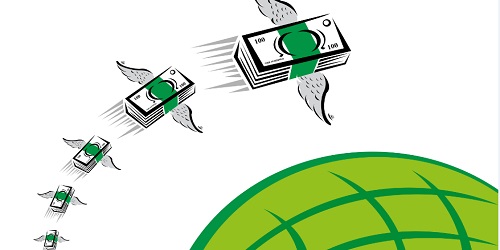Economy shows slight positive signs with increased remittance inflows and BOP surplus

Kathmandu / Feb 6 : Amid speculations of economic slowdown and challenges in the country’s economy, some positive signs are visible in the economy except for higher inflation rate.
According to the Nepal Rastra Bank (NRB), the consumer price inflation was recorded at 7.25 percent in the first six months of the current fiscal year compared to 5.65 percent a year ago. Food and beverage inflation stood at 5.62 percent whereas non-food and service inflation rose to 8.57 percent in the review month, the NRB said.
Releasing the Current Macroeconomic and Financial Situation of the country based on first six months’ data ending mid-January, the NRB said consumer price inflation in the Kathmandu Valley, Terai, Hill and Mountain belts surged to 6.93 percent, 7.49 percent, 7.30 percent and 6.69 percent, respectively.
Likewise, the central bank said remittance inflows increased by 24.3 percent to Rs 585.08 billion in the review period against a decrease of 5 percent in the same period of the previous year. In the US Dollar terms, remittance inflows increased 13.9 percent to 4.5 billion against a decrease of 5.7 percent in the same period of the previous year.
Likewise, the number of Nepali workers taking approval for foreign employment increased 64.6 percent to 275,643 in the review period.
However, the current account of the government remained at a deficit of Rs 29.47 billion compared to a deficit of Rs 352.16 billion in the same period of the previous year.
Furthermore, the Balance of Payments (BOP) remained at a surplus of Rs 97.10 billion in the review period which was at a deficit of Rs 241.23 billion in the same period of the previous year.
During this period, exports decreased 32 percent to Rs 80.81 billion against an increase of 95.5 percent in the same period of the previous year. The central bank stated that exports to India and China decreased 40.1 percent and 25.2 percent respectively whereas exports to other countries increased 3.6 percent.
Exports of zinc sheet, particle board, cardamom, woolen carpets, polyester yarn and thread increased whereas exports of soyabean oil, palm oil, oil cakes, textiles, silverware and jewelries decreased.
Likewise, imports decreased 20.7 percent to Rs 792.67 billion against an increase of 51.1 percent a year ago. Imports from India, China and other countries decreased 19.4 percent, 24.6 percent, and 21.4 percent respectively.
The country’s gross foreign exchange reserves increased 10 percent to Rs 1337.29 billion in mid-January 2023 from Rs 1215.80 billion in mid-July 2022. In the US dollar terms, the gross foreign exchange reserves increased 8.0 percent to 10.30 billion in mid-January 2023 from 9.54 billion in mid-July 2022.
Meanwhile, former governor of NRB Dipendra Bahadur Kshetri said that the current economic situation of the country should be taken cautiously because we are yet to return to the previous position.
The major source of foreign reserve is remittance but we have failed to bring in foreign direct investment and we have not been able to offer an alternative to the import of petroleum products, Kshetri said. “We should promote EVs to reduce the consumption and import of petroleum products.” RSS
